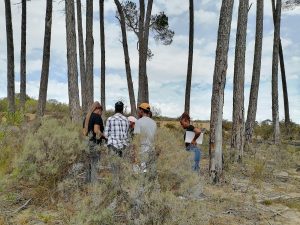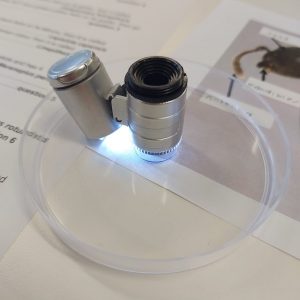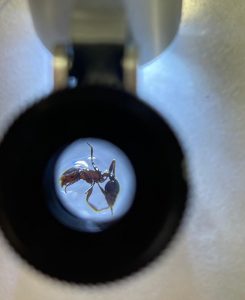On Monday, the 7th and 14th April the Iimbovane team hosted our annual training workshop for Postgraduate Certificate in Education (PGCE) students from Stellenbosch University — an exciting opportunity to bridge the gap between theory and practice for future Life Sciences educators and environmental educators.
The day started with a fieldwork session in the foothills of Stellenbosch Mountain, where students were divided into four groups. Each group planted a 10-pitfall trap grid and conducted vegetation surveys around their assigned site. The traps were left in the field for five days to collect ground-dwelling invertebrates such as ants, spiders, and termites.
|
|
|
Once the sampling period ended, the Iimbovane team retrieved the traps and carefully sorted through the contents. The second part of the workshop took place in the laboratory, where students used dichotomous keys to identify the ant species they had collected, practicing both their identification skills and understanding of invertebrate diversity.
This annual workshop forms an essential part of our efforts to equip PGCE students with the tools and confidence to design and deliver biodiversity-focused practicals in their future classrooms. By connecting them to real-world scientific methods, we aim to inspire the next generation of educators to foster curiosity and environmental awareness in their learners.
|
|
|



